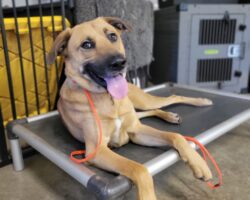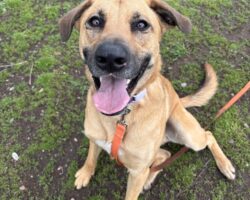Thinking about adopting from SHS but you have other animals at home? Are you nervous they won’t get along or they might not be the best fit for each other? No problem, we perform cat tests which determine if our adoptable pups will get along with cats at home. We also require doggie meet and greets between your resident dog and our shelter pups that are performed by certified shelter staff members; these playdates will demonstrate how well the dogs get along and if they will safely live together in the future.
Here is a demonstration of a dog meet and greet here at SHS. To ensure safety for everyone, follow these steps during every new introduction or encounter your dog may experience.
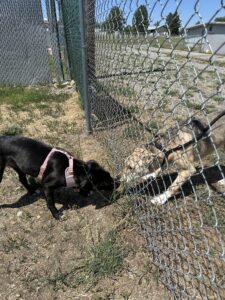
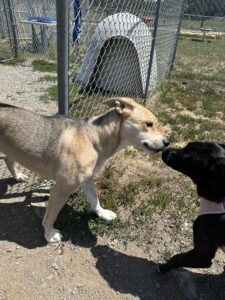
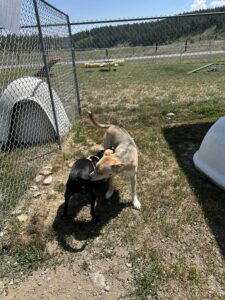
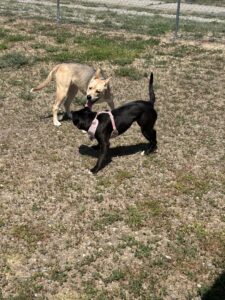
At SHS, we perform our dog meet and greets in our play yards. We first brought Betty (black resident dog) into the play yard. She got her zoomies out while a certified staff member got Bear (grey/tan shelter dog) from her kennel. It was helpful to let Betty run around first, get the lay of the land, and do her business before Bear was introduced.
Once the dogs locked eyes, there were no signs of a negative reaction like barking or jumping so we proceeded to the next step. Bear was brought over to Betty, and they sniffed each other through the fence. During the first introduction, it is important to have the dogs meet through the fence because it ensures safety of the dogs and the people performing the test.
- Tips:
- Remove all toys, bones, blankets, etc. from the yard so the dogs don’t get territorial.
- Use a calm happy voice before and during the meet and greet.
- Keep both dogs on leash (loose but controlled) for the first introduction, this way both owners can pull their dogs away from the situation and re-direct them if needed.
- If either dog starts barking aggressively or tries to fight the fence, each dog should be pulled away from the interaction.
- Reward good behavior, if they smell each other and don’t bark they get a treat!
- Check for body language, if a dog is scared, they will get down close to the ground, if a dog is angry or scared their tail might whip back and forth.
Both dogs reacted positively so Bear was brought into the play yard. Still on leash, both dogs sniffed each other, walked in circles around each other, and then began to play.
- Tips:
- Keep both dogs on leash for the entire duration of the meet and greet; if needed you can grab your dog a lot faster by reaching for the leash or even stepping on it.
- Reward good behavior, after play time is over give them both treats!
Don’t forget to supervise the entire meet and greet. After the first few positive interactions, their leashes can come off and they can gradually spend more time together. After the adoption, keep the dogs separated in the car and at home until both dogs feel 100% comfortable with each other.
- Tips:
- Make sure both dogs have their own space, a kennel or a comfy bed to call their own.
- It might be beneficial to feed the dogs separately, that way don’t fight over food.
If you have any questions about SHS dog meet and greets, ask our front desk!

